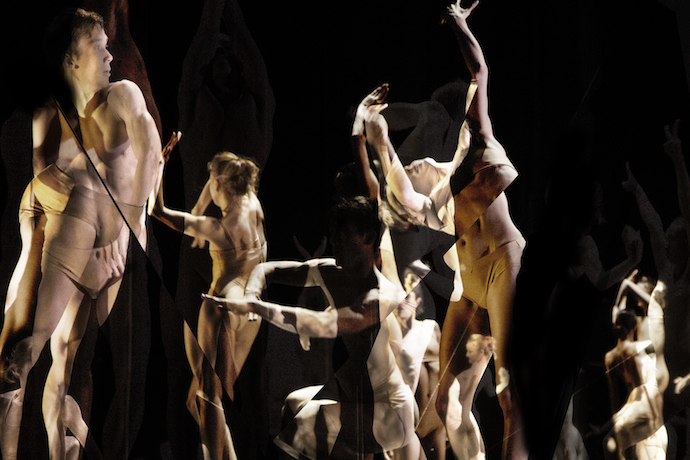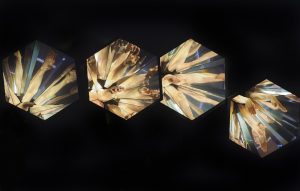
Sadlers Wells, London
By Sarah Kirkup
The audience are plunged into suffocating darkness. Our eyes are drawn to multiplying pinpricks of light weaving intricate shapes at speed, leaving vapour trails behind. Another blackout, but still the dancers remain invisible – now all we see are hands, distorting and mutating inside contraptions that look like metallic flowers coming into bloom.
This is the opening of Tree of Codes, the dazzling, mind-blowing creation for Company Wayne McGregor and Paris Opera Ballet, which premiered in Manchester in 2015. McGregor likes working collaboratively, and for this project he was drawn to visual artist Olafur Eliasson and electronica musician-producer Jamie xx. If dancing at first takes a backseat, that’s because McGregor’s approach was to create ‘an immersive, multi-media performance’.
Tree of Codes was inspired by Jonathan Safran Foer’s book, which, in turn, was a response to Bruno Schulz’s Street of Crocodiles. Foer painstakingly carved out a new work from Schulz’s text, cutting holes in the paper to highlight words and phrases. McGregor was drawn to its ‘physicality’ and set about replicating Foer’s process – choreographing each page, then ‘cutting holes’ in what he had created. Likewise, Jamie xx built an algorithm which ‘played the pages’, using this as a foundation for his sonic landscapes. Eliasson, meanwhile, explored the weightlessness of Foer’s words and their multiple meanings.

If the audience don’t grasp all this, that’s OK; McGregor’s main aim was that we would create our own narrative, primarily by participating rather than merely observing. Are we seeing Adam and Eve symbology in the first pas de deux and, later, branches in the configuration of bodies? It’s our responsibility to join up the dots. Eliasson has said he wants audiences to ‘see themselves’ in his art and he quite literally achieves this with elaborate mirrors, which reflect both the dancers and us watching them.
As Eliasson’s set evolves – lighting rigs swathed in pink, revolving cut-out globes the colour of boiled sweets – and Jamie xx’s music varies between sultry, pounding earthiness and plaintive, vocal-hued otherworldliness, McGregor’s powerful choreography is the link between the two. He pushes the dancers to their limits with hyper-extensions and jerky contortions, but just when it all seems too relentless he slows it down; a reflective, innately musical solo from Paris Opera Ballet’s Jérémie Bélingard stands out for its emotional resonance which at other times feels lacking.
It would be easy to compare the dancers. But this isn’t about competing – it’s about two sets of phenomenally gifted athletes coming together and sharing ideas. I love that it’s Company WM’s Louis McMiller who partners Paris Ballet’s Marie-Agnès Gillot, resplendent on pointe (but exhausted by the end). I also love the feistiness of Jessica Wright who looks like she wants to do it all again.
Despite desiring a greater emotional intensity, I am in awe of what Tree of Codes has achieved. The fusion of choreography, visuals and music – all executed at the highest possible level – has created a powerful, sensory experience which transforms how audiences interact with contemporary dance. ![]()
Tree of Codes is at Sadlers Wells until March 11th. It travels to Aarhus 2017 European City of Culture for performances on 27-29 April; visit waynemcgregor.com for more information
https://vimeo.com/140445691